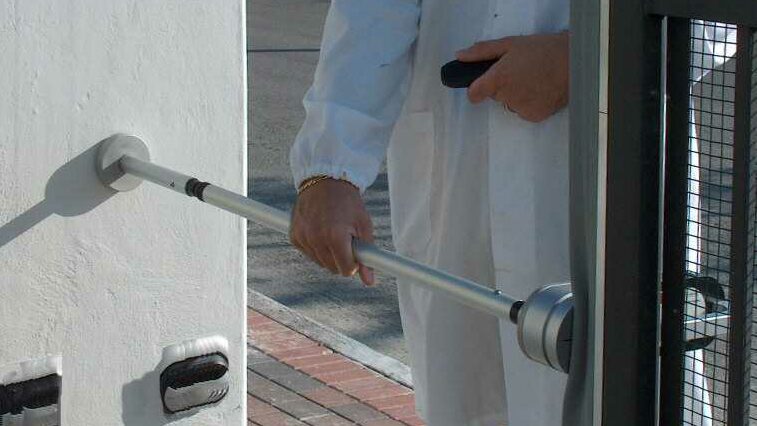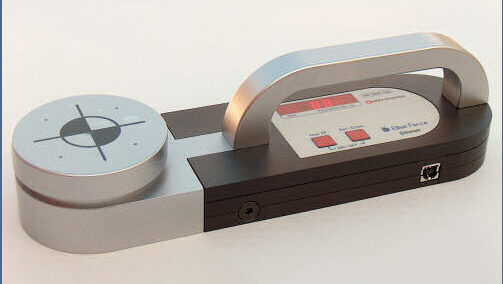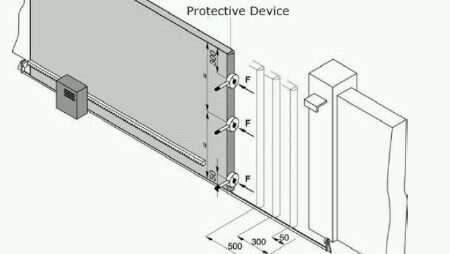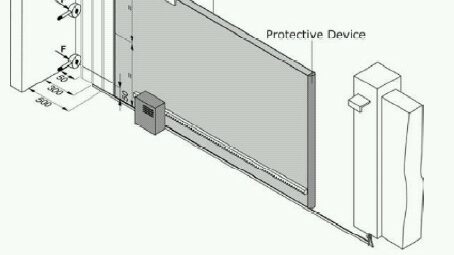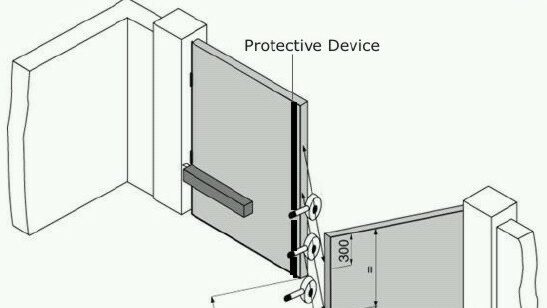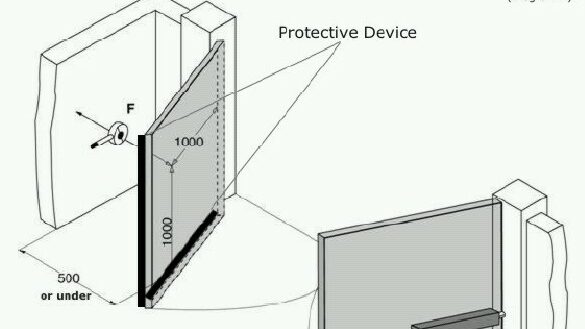Automatic Gates Force Testing
Automatic Gates Force Testing Health & Safety Testing to BS EN 12453 Machine Directive
The following information is provided as an overview of the testing procedure involved for compliance to BS‐EN12445 Machine Directive for industrial, commercial and garage doors and gates. This standard ensures safety in use of power operated doors and gates. Compliance testing to this standard applies to all new automatic gates installed, and also should be carried out to any retro‐fit installations on existing gates. EDS follow the latest DHF guidance for gate design and installation, ensuring your gates are safe, secure and reliable in operation.
All information is provided as guidance only and is referenced from official regulation documentation. EDS (Electrical-Data-Security) Ltd accepts no responsibility for any errors or omissions in this document. The full standard is available for purchase from the British Standard Institute.
The installer of a new gate system should carry out a full risk assessment of the site where the gate is to be fitted both before and after the installation. The following guide describes the testing procedure for automatic sliding and swing gates.
- Automatic Gates Force Testing
- Swinging Gates Force Testing
- Sliding Gates Health & Safety Testing
- Swinging Gates Health & Safety Testing
- Sliding Gates Force Testing
- Automatic Gates Safety Testing
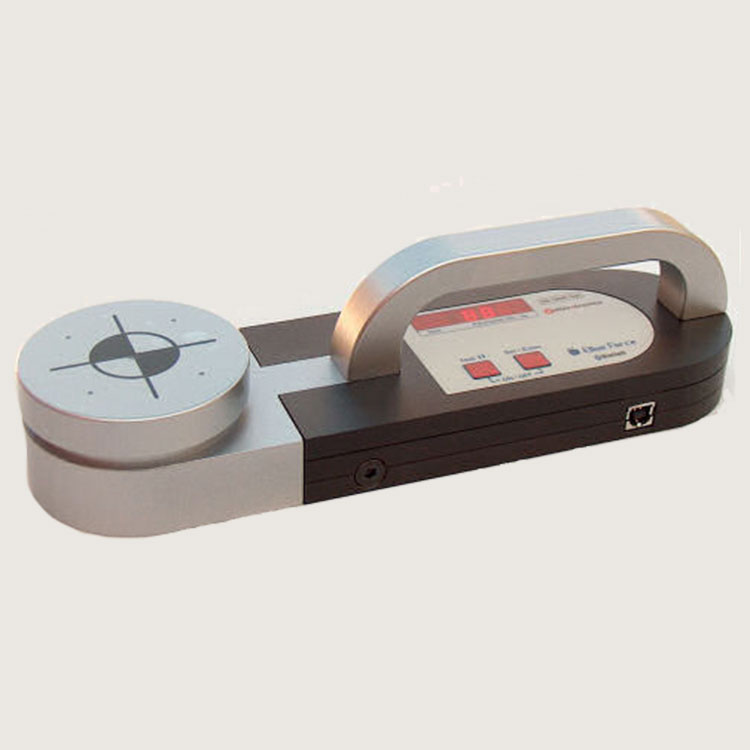
Sliding Gate Test Points
A typical sliding gate closing scenario is shown in the diagram on the right. The test points required by this standard are indicated and must be carried out as follows :‐ Vertically testing points to be measured are 50mm from bottom, 300mm from top and then halfway up the gate (up to a height of 2.5M). Distances from closing position are also measured at 500mm, 300mm & 50mm. Each measurement point is tested 3 times and the average value is used.
There are a total of 27 measurements to make using an EN12445 approved testing device. If the average test results exceed 400N in force, an appropriate protective device (e.g. resistive Safety Edge) should be fitted to the gate and the tests carried out again.
The tests are repeated for the opening phase of the gate if an obstruction or opening post is in place. If the average test results exceed 400N in force, an appropriate protective device (e.g. resistive Safety Edge) should be fitted to the gate and the tests carried out again.
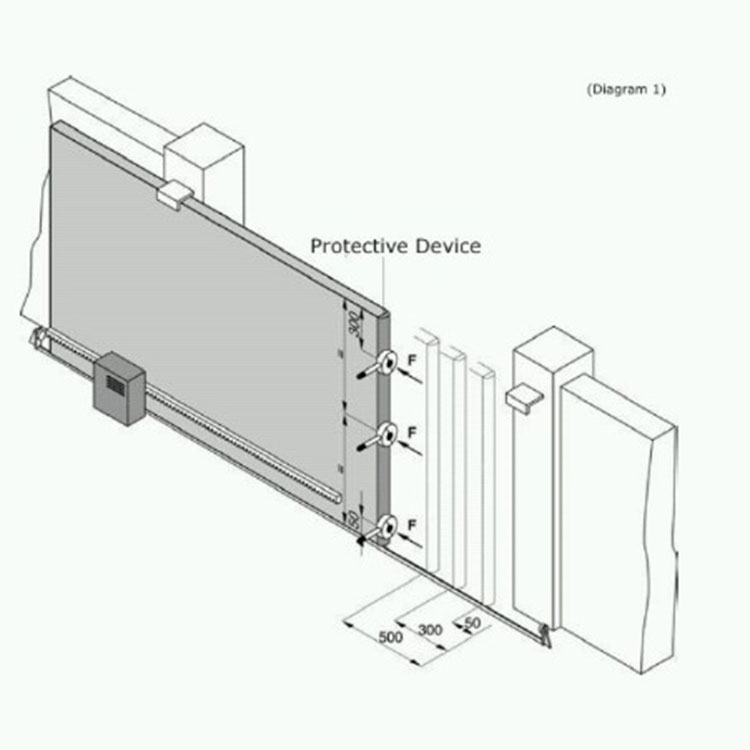
Swing Gate Test Points
A typical swing gate closing scenario is shown in the diagram on the right. The test points required by this standard are indicated and must be carried out as follows :‐ Vertically testing points to be measured are 50mm from bottom, 300mm from top and then halfway up the gate (up to a height of 2.5M). Distances from closing position are also measured at 500mm, 300mm & 50mm. Each measurement point is tested 3 times and the average value is used.
There are a total of 27 measurements to make using an EN12445 approved testing device. If the average test results exceed 400N in force, an appropriate protective device (e.g. resistive Safety Edge) should be fitted to the gate and the tests carried out again.
Tests are also to be carried out for the opening phase of the gate if obstructions such as a wall, fence or post are within 500mm of the gate’s fully open position. In this case a single measurement point should be selected either 1000mm from the ground or at the most prominent point of the gate.
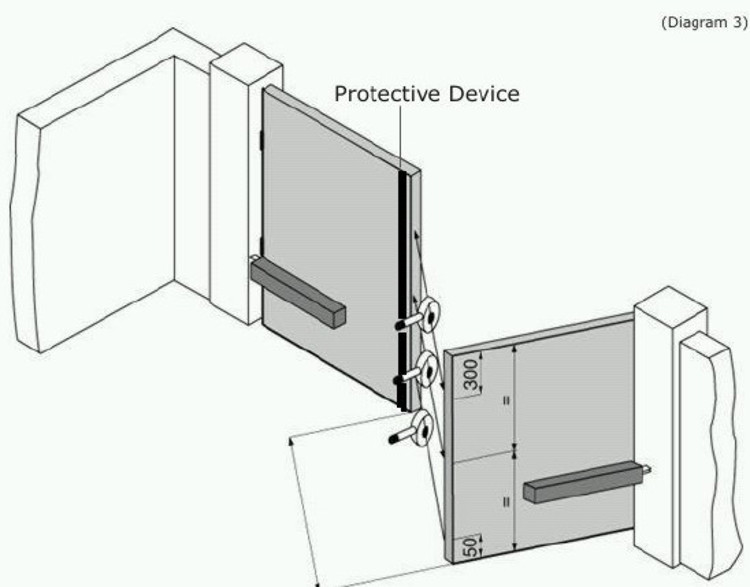
Service, Maintenance & Repairs
EDS can maintain any type of existing system, providing on-site and workshop repairs to any make of systems. With a large stockholding of spare parts we can turn around repairs rapidly.
Routine Maintenance
Regular maintenance is fundamental to ensure your systems operate as effectively as when they were first installed, we are able to provide competitive quotation for maintenance of new and any type of existing system.
Image Gallery
EDS are able to provide Wooden Gates, Oak Gates, Steel Gates, Stainless Steel Gates, Aluminium Gates and most other types of materials, please contact us for more details.
